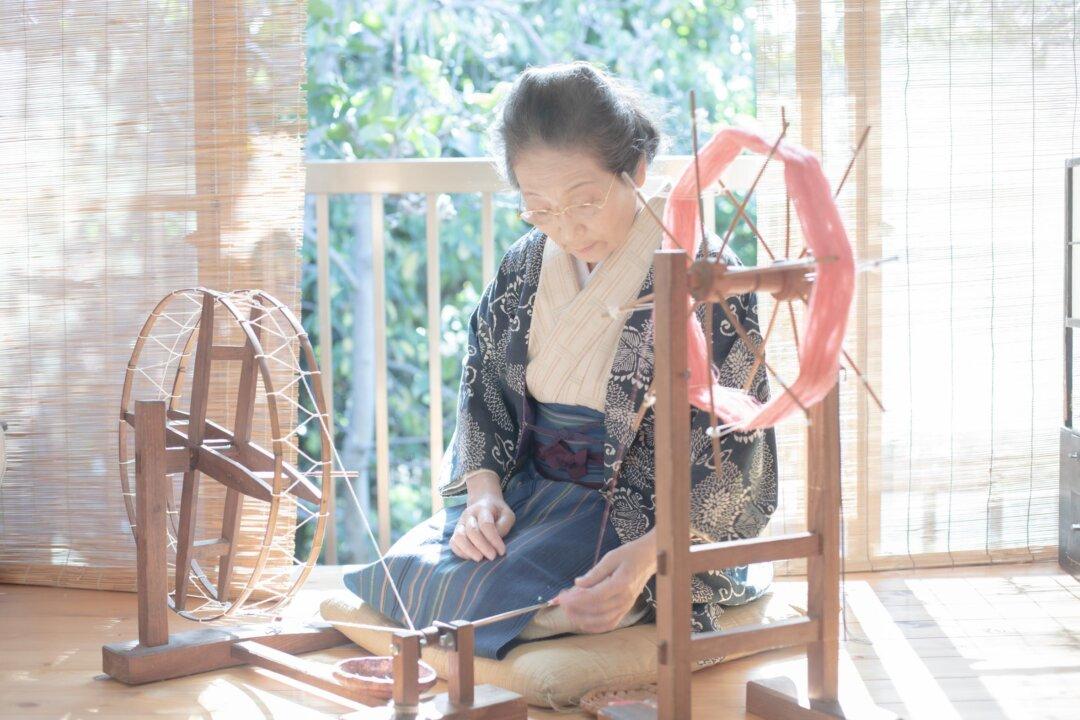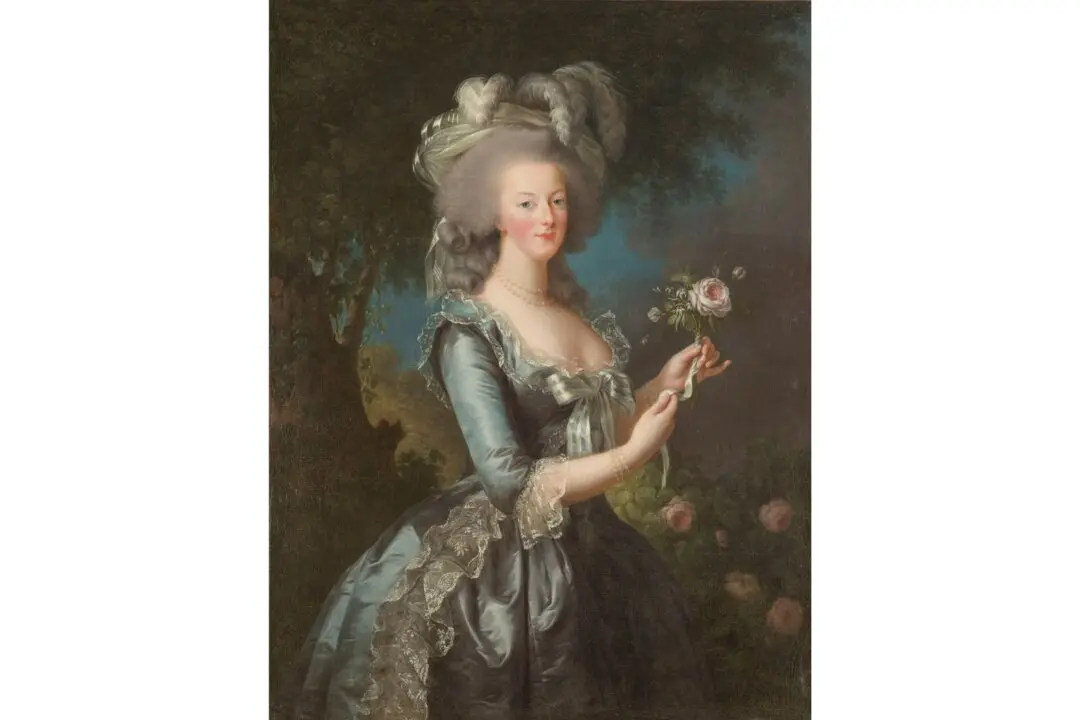Japanese photographer Rinko Kawauchi has captured a serene and timeless scene as silk-weaver Sonoko Saskia kneels while she spins silk floss into yarn on her spinning wheel. Sonoko’s traditional kimono and spinning wheel hark back to the past, yet she makes her raw silk, known as “pongee,” today.
Sonoko uses traditional methods. She makes dyes from leaves and grasses to color her yarn, and then she uses the tsumugi-ori weaving technique that utilizes discarded silkworm cocoons to make her cloth.






